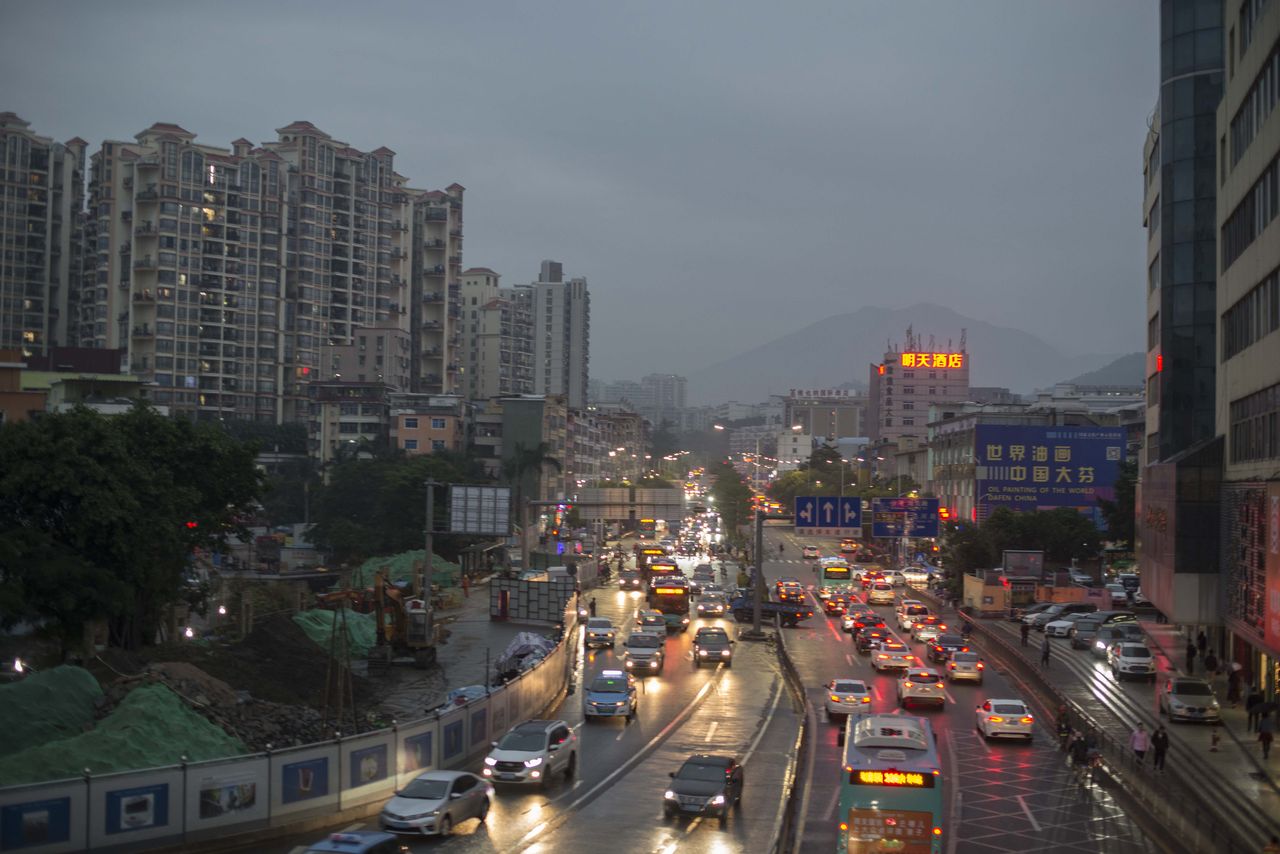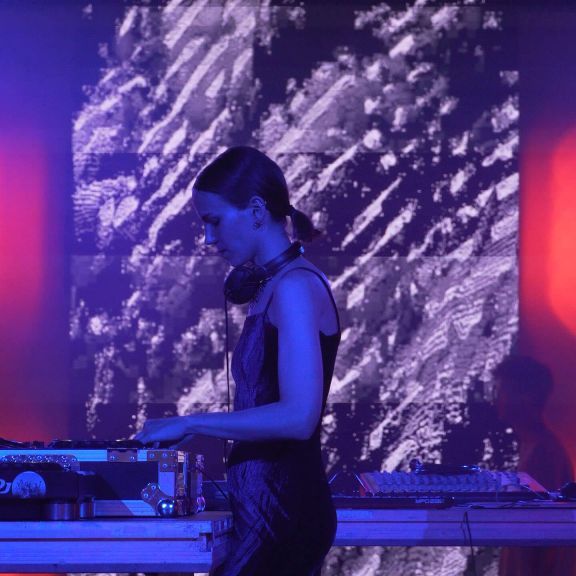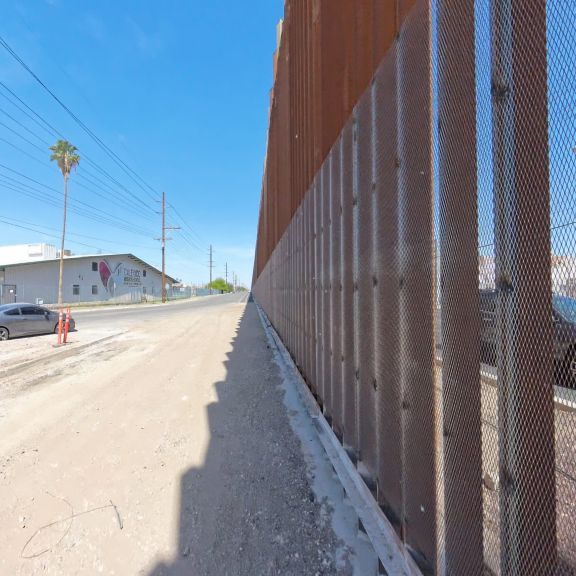
40 years later – from “Made in China” to Makers Land
December 2018 marks the 40th anniversary of Chinese reforms and opening-up policy that transformed the country forever. Shenzhen city was China’s reform pioneer. We travelled to once a fishing town that gave birth to Huawei and other technological giants. We talked about urbanism, electric vehicles, “Maker” Movement, education and ‘
Riding a public bus in Shenzhen, the first thing that stands out is the bus. It does not make any noise. Between palm trees and ostentatious skyscrapers, there is a striking tranquillity of a megacity where 12 million people live. Pee pee pee pee, a motorcycle interrupts. All public buses here (over 16,000) and 13,000 taxis are electric. It is the world’s first city with a fully electric bus fleet. “That’s why every bus has green license plates, like most of the taxis,” a passenger explains.
Electric vehicles are one of the fields in which China wants to lead under the Made in China 2025 plan. 99% of the electric buses (385,000 buses) in the world are working in China, according to the World Economic Forum. More than 30 Chinese cities expect to replace existing fuel–powered buses by 2020.
Forty years ago, China initiated the experiment of transforming its economy towards a capitalist model, maintaining the one-party authoritarian system. The experiment started here.
Once upon a time…
…there was a fishing village that became a technological hub. The stage has a poetic name: the Pearl River Delta. Bordering with Hong Kong, in 1978 Shenzhen was designated to be China’s first Special Economic Zone (SEZ’s). “Special” meant a series of reforms to open China to free trade and attract overseas investment.
While boarding the bus, we left behind a huge poster of Deng Xiaoping, an architect of China’s economic reforms. After Mao Zedong’s death in 1976 and after the Cultural Revolution (1966-1976), Deng Xiaoping rose to power and introduced modernisations reforms in agriculture, industry, technology, and the defence that changed China forever. The new development strategy included “allowing overseas enterprises to establish equity joint ventures with Chinese companies and directly exposing state-owned enterprises to the financial and managerial influences of foreign investors”, ‘The “Instant City” Coming of Age’ report by Center for Urban and Global Studies’ explains.

Cheap land and labour attracted factories that started to think that Hong Kong was becoming expensive. Skyscrapers began to rise over the village of brick houses in record time, thanks to the efforts of thousands of men that moved from rural areas. The phenomenon is called “Shenzhen speed.”
Shenzhen story has many protagonists. Among them are thousands of exhausted men who built the city but also the foreign companies that, coveting more benefits, relocated the manufacture of their products here, in exchange for low wages. The best known is the Taiwanese multinational Foxconn that manufactures, between others, iPhone, iPad, PlayStation or GoPro cameras and that has its largest factory here in Shenzhen.
From Hardware to Software Delta
“Whatever brand is your smartphone – including Huawei, Vivo, Oppo and hundred of others – the chance it has been manufactured in Shenzhen is pretty big”, says David Li, founder of China’s first
billion in the 90’s to 291 billion today.
Bus number 10 leaves us at Huaqiangbei, the gadgets’ paradise. More than 60 electronic markets, 20,000 merchants and nearly 200,000 employees congregate in this area. In the main square, there are giant advertisements with guys wearing makeup inviting you to buy the latest model of Huawei and Vivo phones, and a constant movement of carts with packages. A young man, sitting on the floor of a staircase, is putting mobile phone cases in envelopes to sell them online.
Inside the Seg Electronic Market Plaza, an electronic five-storey bazaar, the soundtrack is created by the negotiations between sellers and customers and the sound of cellophane that covers the packages. Some kiosks sell USB cables, plates, lights and any electronic object imaginable from tiny cameras, indiscreet little drones, flashlights, robots or battery-operated mats to professional pianos.
Camilo Parra, Colombian engineer and maker, 29, inventor of OttoDIY, an open source robot, began to visit Huagiangbei “to buy everything that I bought before on eBay, especially Arduino boards and sensors.” “The first visits were a mess because I bought so many things that later I did not have space for clothes in my suitcase and I had to throw away clothes or electronics”, he admits. Now, he buys “components to make my prototypes” and also goes to PCB and CNC factories. The Colombian maker recognises that many things are happening here. “For instance, recently in Colombia, the first unicorn company came out to deliver food at home, this is something that has been working here for seven years now.”

A brief introduction to the new “Shanzhai”
Shenzhen story would be incomplete without a word with many nuances:

“Copy/paste is how people learn”, Li contends. “Since the industrial revolution, every developing nation went through the same stage. Up until the 90s, Japan was still considered as a nation of creative copying”, he says. “Germans were notoriously copying the British, the ‘Made in Germany’ mark was originally perceived as an inferior product”, he continues. The difference between ‘shanzhai’ and ‘fake’, according to Li, is “shanzhai democratises the creation and production process and empowers more people to join it” and “fake is just a term used to dismiss this potential.”
When Aaron Martinez, 37, a mechatronics engineer from Las Palmas de Gran Canarias, Spain, learned two of his toys were copied, he “felt a little bad, but remembering conversations with some colleagues, if China copies your works, it is because you are doing things right.” He started travelling to China with a Spanish toy company (Toy Stand). Firstly, he travelled to Shantou, the so-called “toy-city” near Shenzhen. Today “I think China is starting to set trends in creation and the rest of the world is beginning to copy China, for example, three years ago I had seen some apps in China, which a year ago I saw in Europe”. He is currently the owner of a company dedicated to marine robotics (SubSeaMechatronics.com).
Huawei, Tencent and Xiaomi birthplace
Shenzhen is no longer just a big gadget bazaar. It is home to tens of thousands of start-ups, according to Xinhua Agency and the birthplace of Chinese electronic giants such as Huawei and Xiaomi phone companies or Tencent, the company behind Wechat (the Chinese Whatsapp).
“I think the time when China was very cheap has passed, it’s behind us”, says Henk Werner, a 52-year-old Dutchman that deals with Troublemaker, a product development community in Shenzhen. “Now, to have a good margin, Chinese companies design their ecosystems of products, their brands and that is why they need different qualities than they needed before. Industrial designers are one of them, and it is something that schools are developing for the new generation of Chinese engineers”, he explains. In a hallway, there is a mock-up with mountains and rivers made of sand, which changes colour thanks to a projector. “It’s to teach geography”, Henk says.
The director of Troublemaker is convinced that to create great things you have to get into trouble. He knows it well. He came to China seven years ago and worked as a consultant. He took a break in his Chinese adventure in 2015 when he returned to the Netherlands with an idea of a French fries vending machine. But it failed. “The idea was good, but the team did not work,” he says laughing. He returned and started this community two years ago. “Every few minutes a new company is registered in Shenzhen. If you are in hardware there are apparent reasons to be here,” he adds.

From Silicon Valley to Shenzhen (and vice versa)
Eight years ago, Carrie Leung followed a path opposite to her parents’ one: from San Francisco to Shenzhen. Born and raised in California, after spending a decade working in Silicon Valley, she decided to travel to her parents’ land “to know a little more about my roots”. She stayed.
We meet Leung at the Shenzhen American International School, a 100% project-based learning school, where she leads the maker education program. She is also the director of SteamHead, a non-profit organisation that aims to increase design in education, inspired by the Maker movement.

Between pieces of cardboard and a future satellite – “it is not a spaceship”, its author clarifies – Leung speaks enthusiastically of the dress that Maria, an 11-years-old girl has designed, with butterflies that fly. Engineers from the M5 Stack community and the MakerFashion Edu collaborated to make it… “The idea of a girl in a fashion show, that’s something that happens only here,” she says. “I think the biggest thing about this school is that we are very open, we share. The Maker Fair is an example, 30 schools participated in it this year”, she says. Another example is a Maker program that they organise every Monday with children from a nearby public school.
Leung admits that this type of learning is something that not everyone can afford today in China because the educational system revolves around an examination: the gaokao. “This is the test that can determine how successful you are during the rest of your life. So, if you come from a rich family and later you will be able to study abroad, you can try a different kind of education.” “Some parents know that this type of education might be good, but they have no other choice because their children need to pass the test”, she concludes.
Industrial designer Wudi Hong, 28, has just returned to Shenzhen after spending four years in the United States: three years studying in California and one year working in Silicon Valley. He responds to the comparison between the American Valley and the Chinese Delta with an anecdote: “Two months ago I went to the bookstore opened recently by Amazon. When I finished shopping, the lady called me to explain to me how to pay by your phone. ‘It is our new way of paying here,’ she said. “And I was thinking in my heart, that I have been doing this for the last six years in China”, he laughs.

Forty years later…
They say no one comes from Shenzhen. They also say that everyone who arrives here comes from here. When Wudi Hong moved to Shenzhen with his parents from Anhui in 1994, “at that moment, there were only two famous buildings in the city, Shanghai Hotel and Guomao Building”, a 50-storey skyscraper that had been built within only three years (between 1982 and 1985). Today, Shenzhen is home to over 100 skyscrapers (more than 200 meters tall), according to Xinhua Agency. The tallest one, the 115 floor Ping An International Finance Center, 599 meters tall, is also the fourth tallest in the world.
“I designed a skyscraper in my twenties.”
“What makes this city special is that a 27-years-old young guy, just three years of experience, can design a 50-storey building. It happened to me,” says Jong Ouyang, 34, a senior architect who works as a freelancer. Ten years ago, he arrived from Guanxi Zhuang Autonomous Region. “This city gives opportunities to the youngest,” he says. The average age of the population in Shenzhen is 32 years old.
Superfast growth and green urbanism
Shenzhen is one of the fastest growing cities in the world. The term ‘instant city” is often used to describe this explosion – like instant noodles that sprung up when someone adds water. Between 1978 and 2018, its population went from around 30,000 to more than 12 million. It was achieved “with planning and some freedom in the pockets”, Dutch curator of design and architecture Ole Bouman explains.

Ole Bouman, Dutch curator of design and architecture. (photo by Lola García-Ajofrín)
It looks like the ocean sound, but it is the roof. Hanging from the ceiling of the cafeteria in which the interview with Ole Bouman takes place, some spherical devices send out the sound of the waves. The cafeteria is located in the futuristic white building of a Design Society, a public space dedicated to design as an initiative of China Merchants Shekou Holdings (CMSK) and the Victoria and Albert Museum in Shenzhen. Bouman, director and the
When Bouman first arrived in Shenzhen seven years ago, the city was different, and this building did not exist.
We asked him what can other cities worldwide learn from Shenzhen’s growth?
“I think it is a difficult question because the best lessons from Shenzhen are lessons that you cannot learn because it is all about the growth rate. Not every city grows so quickly. So, one lesson is, in spite of that growth and speed; still it can be planned, there is still urbanism”, he answers. “Like parks, traffic, street life, bike sharing economy”. Also, among all that growth “some freedom in the pockets.”
“Hand-shake” buildings and the architects of Shenzhen’s success
A multitude of children in similar uniforms gathers in front of a sausage stand in Baishizhou, the largest urban village in Shenzhen. A motorcycle dealer drives through the streets to deliver his order. The so-called “urban villages”, like this one, are mini towns within the city, where the first workers who migrated from other provinces settled. Old buildings and improvised businesses coexist here. They are called “handshake” buildings because they are so close to one another that neighbours can shake hands. In Shenzhen story, not everyone is a princess. As the city grows, rents rise, and the workers who helped to build the Chinese dream have to move out.

Baishizhou, the largest urban village in Shenzhen. (photo by Lola García-Ajofrín)
At night, a giant number 40, next to the statue of Deng Xiaoping in Lianhuashan Park (literally “Lotus Hill Park”) reminds visitors of the 40th anniversary of the reforms. Every evening around 7 pm the visitors gather next to the statue, to witness the festival of lights that colour the buildings with fish, human figures and Chinese flags. Writing about these “40 years of uninterrupted growth”, New York Times entitled recently: ‘The Land that failed to fail’. In the article, its author, Philip P. Pan states: “The world thought it could change China, and in many ways it has. But China’s success has been so spectacular that it has just as often changed the world.” For good and bad.
The future of Shenzhen
The trip to Shenzhen ends as it began, on a bus. Outriders could not talk to its driver because the buses here do not have drivers… Six self-driven buses (driverless) travel on the public roads daily at























